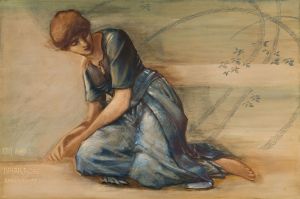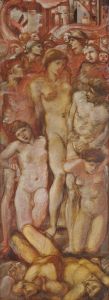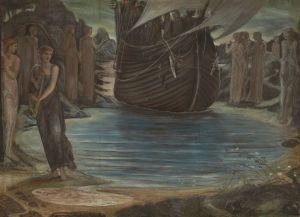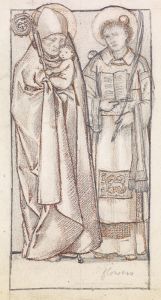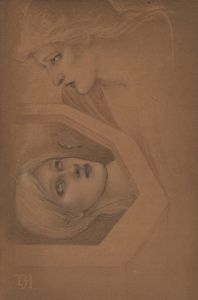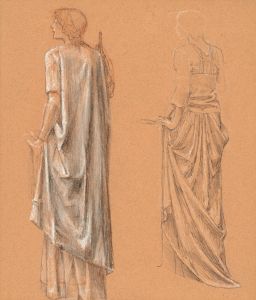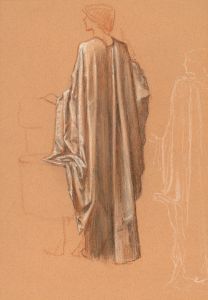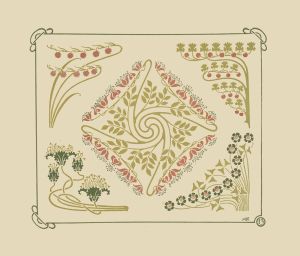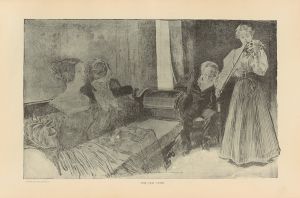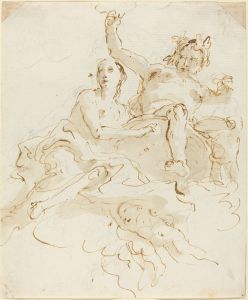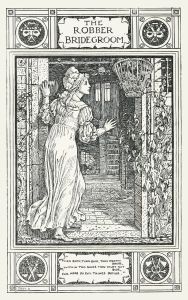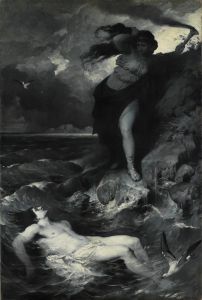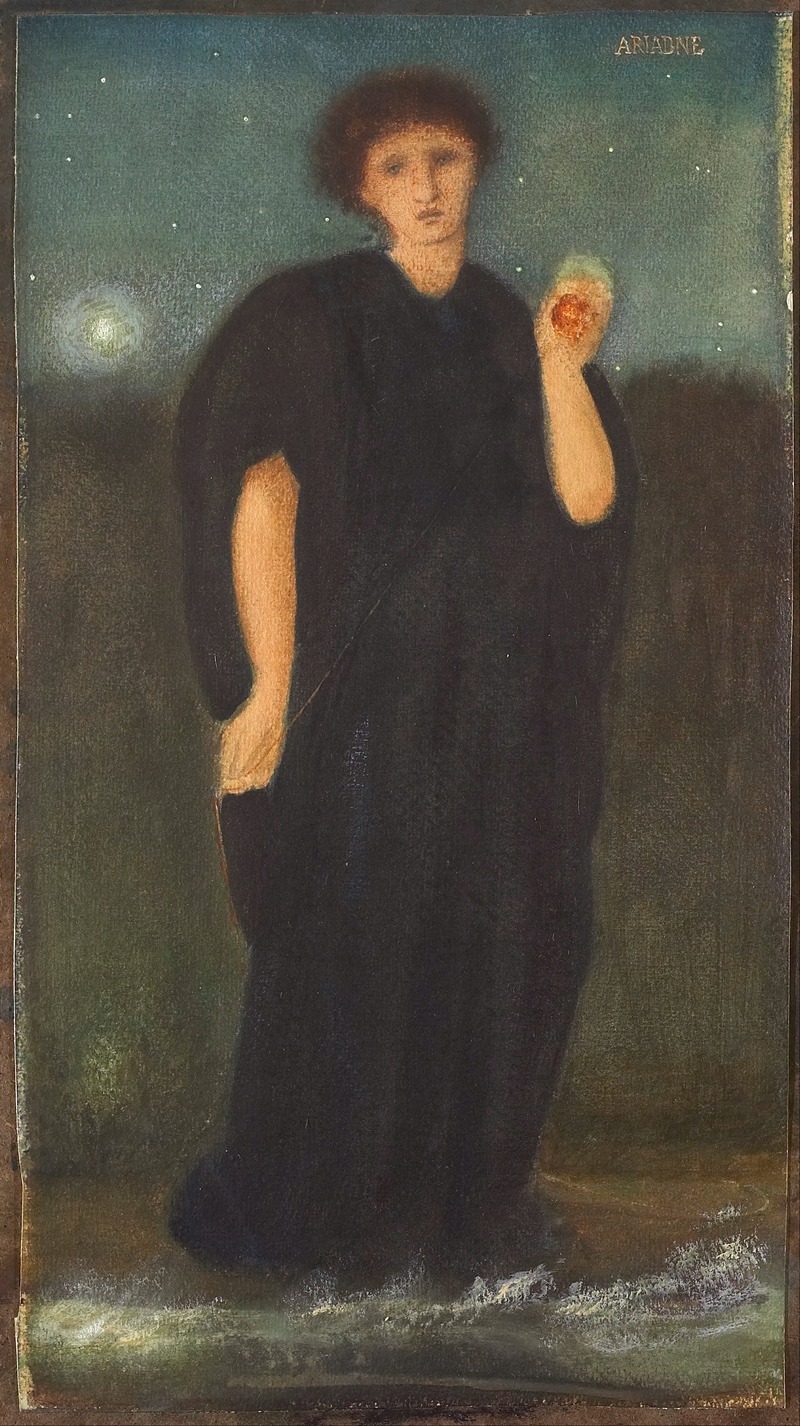
Ariadne
A hand-painted replica of Sir Edward Coley Burne-Jones’s masterpiece Ariadne, meticulously crafted by professional artists to capture the true essence of the original. Each piece is created with museum-quality canvas and rare mineral pigments, carefully painted by experienced artists with delicate brushstrokes and rich, layered colors to perfectly recreate the texture of the original artwork. Unlike machine-printed reproductions, this hand-painted version brings the painting to life, infused with the artist’s emotions and skill in every stroke. Whether for personal collection or home decoration, it instantly elevates the artistic atmosphere of any space.
Sir Edward Coley Burne-Jones was a prominent British artist associated with the Pre-Raphaelite Brotherhood, a group that sought to return to the detail, intense colors, and complex compositions of Quattrocento Italian art. Among his many works, "Ariadne" is one of the paintings that showcases his distinctive style and thematic interests.
"Ariadne" by Burne-Jones is a representation of the mythological figure Ariadne, who is known in Greek mythology as the daughter of King Minos of Crete. She is most famous for her role in the myth of Theseus and the Minotaur, where she aids Theseus in navigating the labyrinth to defeat the Minotaur by providing him with a ball of thread. After Theseus abandons her on the island of Naxos, she is discovered by the god Dionysus, who eventually marries her.
Burne-Jones's depiction of Ariadne is consistent with his fascination with classical mythology and his ability to convey emotion and narrative through his art. His works often feature elongated figures, a muted color palette, and a dreamlike quality, all of which can be seen in "Ariadne." The painting captures a moment of introspection and solitude, reflecting Ariadne's abandonment and her subsequent transformation.
The composition of "Ariadne" is marked by Burne-Jones's characteristic attention to detail and his use of symbolism. The figure of Ariadne is often depicted in a contemplative pose, surrounded by elements that suggest both her past and her future. The use of light and shadow, as well as the careful rendering of textures, adds depth to the painting, inviting viewers to explore the emotional and narrative layers of the work.
Burne-Jones's interest in mythology and his ability to translate these ancient stories into visual art were part of a broader Victorian fascination with the classical world. His works, including "Ariadne," often explore themes of love, loss, and transformation, resonating with the cultural and intellectual currents of his time. The painting not only reflects Burne-Jones's artistic skill but also his engagement with the symbolic and allegorical potential of mythological subjects.
The influence of the Pre-Raphaelite Brotherhood is evident in Burne-Jones's work, as he shared their commitment to reviving the artistic principles of the early Renaissance. His paintings are characterized by their meticulous craftsmanship and their ability to evoke a sense of timelessness. "Ariadne" is a testament to Burne-Jones's mastery of these techniques and his ability to create works that are both visually striking and rich in meaning.
While specific details about the creation and exhibition history of "Ariadne" may not be extensively documented, the painting remains an important part of Burne-Jones's oeuvre. It exemplifies his unique approach to storytelling through art and his contribution to the revival of interest in mythological and historical themes during the Victorian era.
In summary, "Ariadne" by Sir Edward Coley Burne-Jones is a significant work that reflects the artist's engagement with classical mythology and his distinctive artistic style. Through its composition, use of symbolism, and emotional depth, the painting captures the essence of Ariadne's story and Burne-Jones's ability to bring mythological subjects to life.





